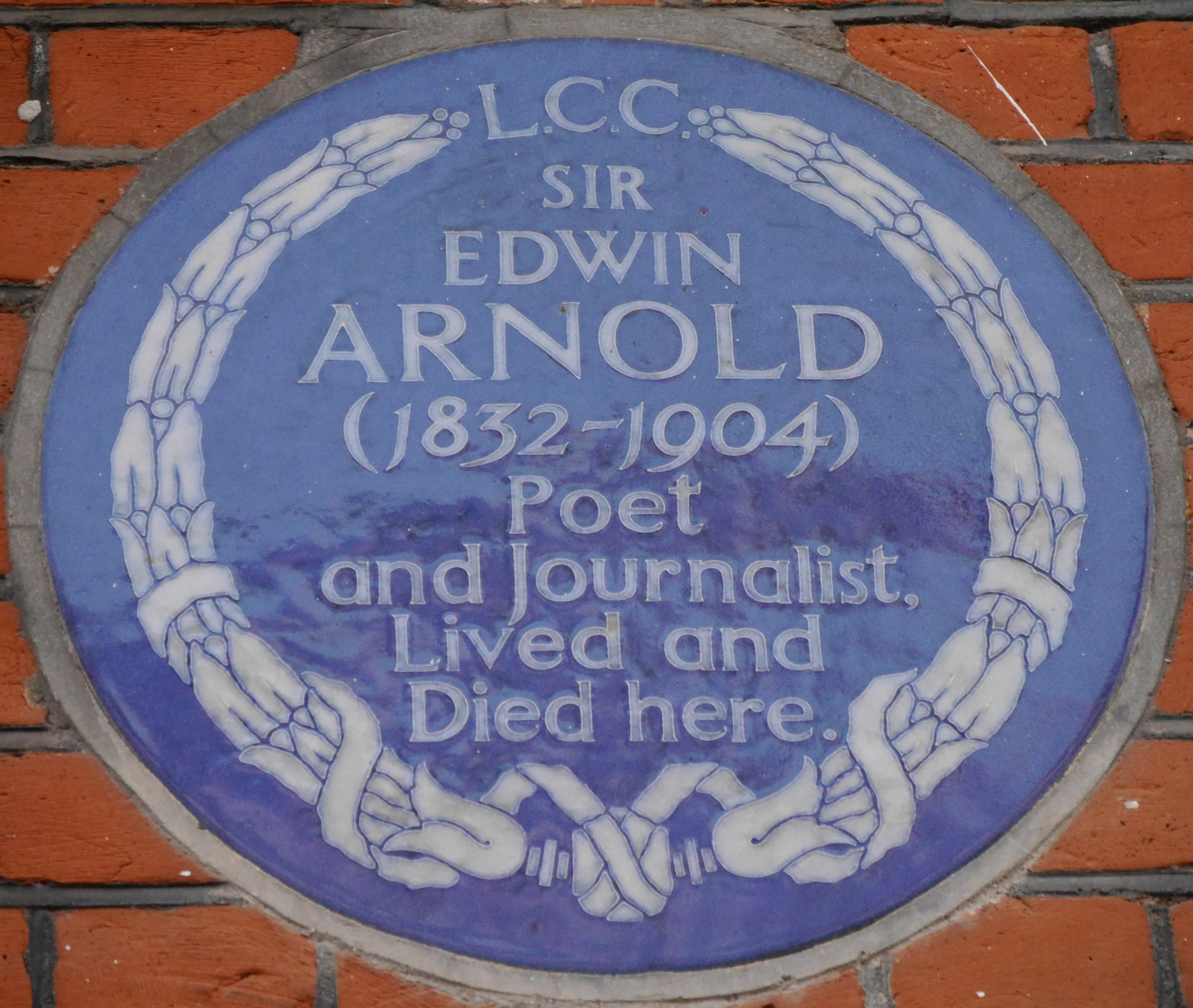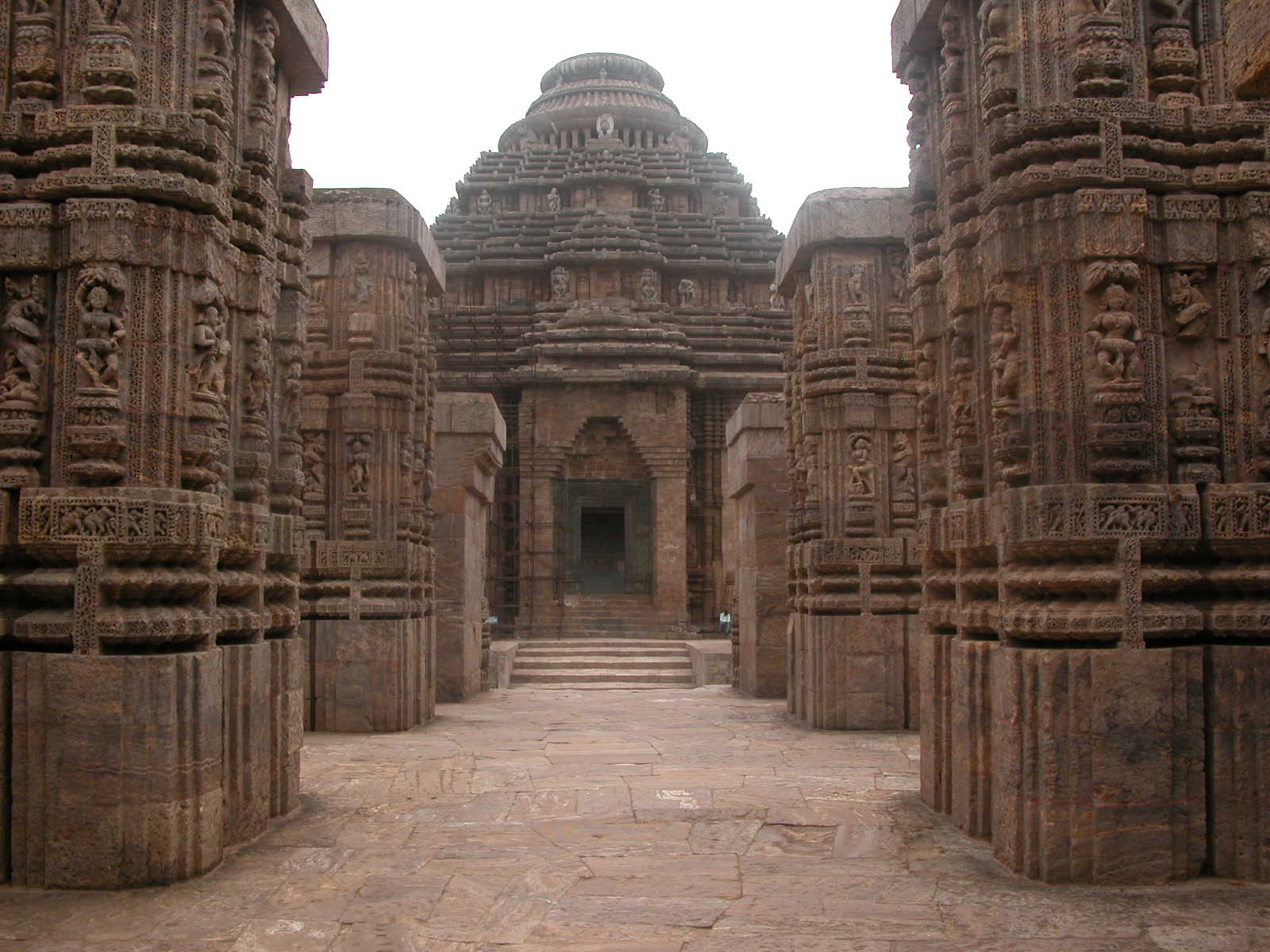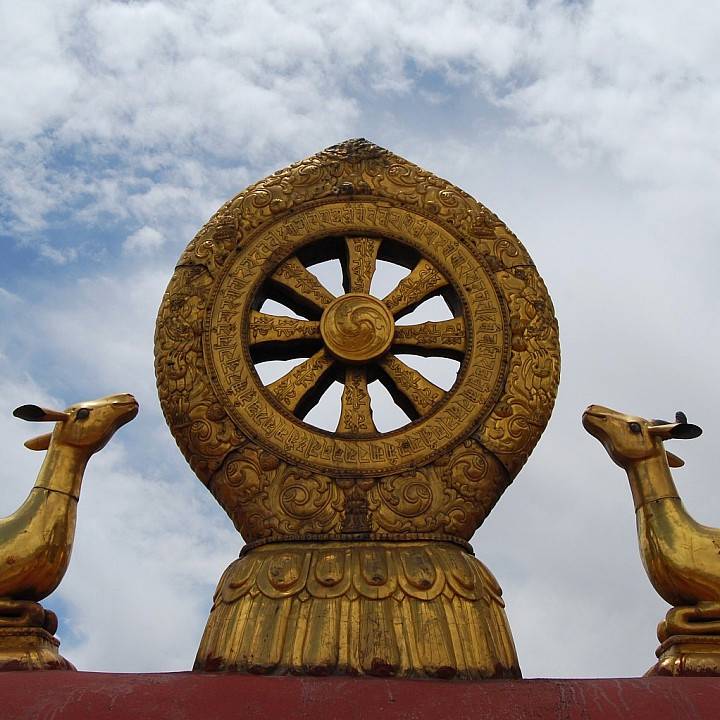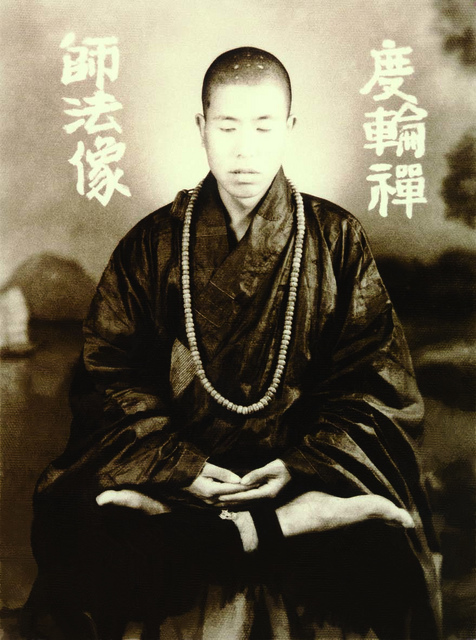|
The Light Of Asia
''The Light of Asia'', or ''The Great Renunciation'' (''Mahâbhinishkramana''), is a book by Sir Edwin Arnold. The first edition of the book was published in London in July 1879. In the form of a narrative poem, the book endeavours to describe the life and time of Prince Gautama Buddha, who, after attaining enlightenment, became the Buddha, The Awakened One. The book presents his life, character, and philosophy in a series of verses. It is a free adaptation of the '' Lalitavistara Sutra''. A few decades before the book's publication, very little was known outside Asia about the Buddha and Buddhism. Arnold's book was one of the first successful efforts to popularize Buddhism for a Western readership. After receiving the poem from theosophists, Mahatma Gandhi was awed and his subsequent introduction to Madame Blavatsky and her '' Key to Theosophy'' inspired him to study his own religion. The book has been highly acclaimed from the time it was first published and has been ... [...More Info...] [...Related Items...] OR: [Wikipedia] [Google] [Baidu] |
Edwin Arnold
Sir Edwin Arnold (10 June 1832 – 24 March 1904) was an English poet and journalist. He is best known for his 1879 work, '' The Light of Asia''. Born in Gravesend, Kent, Arnold's early education at King's School, Rochester, and later at King's College London and University College, Oxford, laid the groundwork for his career. Initially a schoolmaster and later the Principal of the Deccan College in India, Arnold's experiences abroad influenced his literary endeavors. He became associated with ''The Daily Telegraph'', serving as its editor-in-chief, and facilitated H. M. Stanley's exploration of Africa. Arnold's poem, ''The Light of Asia'', an exploration of Buddhist philosophy through the life of Prince Gautama, earned him widespread acclaim. Despite the success of this work, his later attempts to emulate its triumph with ''The Light of the World'' centered on Jesus Christ, faced mixed reception. Arnold's personal life was marked by multiple marriages, including one to a Ja ... [...More Info...] [...Related Items...] OR: [Wikipedia] [Google] [Baidu] |
The Song Celestial
''The Song Celestial: A Poetic Version of the Bhagavad Gita'' is a translation of the Bhagavad Gita (a part of the Mahabharata) from Sanskrit into English by Sir Edwin Arnold, first published in 1885. The translation following ''The Light of Asia'', his narrative-poem of the Lalitavistara Sūtra. It is dedicated to India with the following preface: In his autobiography, Mahatma Gandhi recalled when two theosophist brothers gave him ''The Song Celestial'' during his studies in England. This was the first time Gandhi had ever read the Gita, as he had never read it in Sanskrit nor in Gujarati. Gandhi adored this version, stating: "I have read almost all English translations ..and I regard Sir Edwin Arnold's as the best." Gandhi also invited Edwin Arnold to be the vice-president of the Vegetarian Society in London. Summary The book summarizes itself as the following: Krishna, who is regarded as an incarnation of the Divine, then instructs Arjuna on the way of duty and liberat ... [...More Info...] [...Related Items...] OR: [Wikipedia] [Google] [Baidu] |
Bhagavad Gita
The Bhagavad Gita (; ), often referred to as the Gita (), is a Hindu texts, Hindu scripture, dated to the second or first century BCE, which forms part of the Hindu epic, epic poem Mahabharata. The Gita is a synthesis of various strands of Indian religious thought, including the Vedic concept of ''dharma'' (duty, rightful action); samkhya-based ''yoga'' and ''jnana'' (knowledge); and ''bhakti'' (devotion). Among the Hindu denominations, Hindu traditions, the text holds a unique pan-Hindu influence as the most prominent sacred text and is a central text in Vedanta and the Vaishnava, Vaishnava Hindu tradition. While traditionally attributed to the sage Veda Vyasa, the Gita is historiographically regarded as a composite work by multiple authors. Incorporating teachings from the Upanishads and the samkhya Yoga (philosophy), yoga philosophy, the Gita is set in a narrative framework of dialogue between the pandava prince Arjuna and his charioteer guide Krishna, an avatar of Vishnu, a ... [...More Info...] [...Related Items...] OR: [Wikipedia] [Google] [Baidu] |
Theosophist
Theosophy is a religious movement established in the United States in the late 19th century. Founded primarily by the Russian Helena Blavatsky and based largely on her writings, it draws heavily from both older European philosophies such as Neoplatonism and Indian religions such as Hinduism and Buddhism. Although many adherents maintain that Theosophy is not a religion, it is variably categorized by religious scholars as both a new religious movement and a form of occultism from within Western esotericism. As presented by Blavatsky, Theosophy teaches that there is an ancient and secretive brotherhood of spiritual adepts known as the Masters, who are found around the world but primarily centered in Tibet. These Masters were alleged by Blavatsky to have cultivated great wisdom and supernatural powers, and Theosophists believe they initiated the modern Theosophical movement through disseminating their teachings via Blavatsky. Theosophists believe that these Masters are attempting ... [...More Info...] [...Related Items...] OR: [Wikipedia] [Google] [Baidu] |
Dasu Sriramulu
Mahakavi Dasu Sriramulu (18461908) was an Indian scholar, poet, orator, author, astrologer, avadhani, translator, and social reformer. He was a lawyer by profession. He was a child prodigy. He had no formal tutelage in these diverse arts – his knowledge was gained through his personal studies and association with scholars and artists. Early life and education He was born on 8 April 1846 in Kuraada village, Krishna District, Madras Presidency (presently the Andhra Pradesh state), India. Sriramulu's parents were Kannayya and Kamamma. He had early education in Sanskrit, Telugu, Vyakarana (grammar) and Scriptures in the traditional manner. He mastered these arts from his close association with exponents in these arts and by natural instinct rather than by formal percept under a guru. In his tenth year he studied Telugu, Sanskrit classical literature and Hindu Astronomy, by his twentieth year attained proficiency in these subjects and after another six years secured a teac ... [...More Info...] [...Related Items...] OR: [Wikipedia] [Google] [Baidu] |
East India
East India is a region consisting of the Indian states of Bihar, Jharkhand, Odisha and West Bengal and also the union territory of the Andaman and Nicobar Islands. The states of Bihar and West Bengal lie on the Indo-Gangetic plain. Jharkhand is situated on the Chota Nagpur Plateau. Odisha lies on the Eastern Ghats and the Deccan Plateau. West Bengal's capital Kolkata is the largest city of this region. The Kolkata Metropolitan Area is the country's third largest metropolitan region. The region is bounded by Bhutan, Nepal and the state of Sikkim in the north, the states of Uttar Pradesh and Chhattisgarh on the west, the state of Andhra Pradesh in the south and the country of Bangladesh in the east. It is also bounded by the Bay of Bengal in the south-east. It is connected to the Seven Sister States of Northeast India by the narrow Siliguri Corridor in the north east of West Bengal. East India has the fourth-largest gross domestic product of all Indian regions. The regio ... [...More Info...] [...Related Items...] OR: [Wikipedia] [Google] [Baidu] |
Noble Eightfold Path
The Noble Eightfold Path () or Eight Right Paths () is an early summary of the path of Buddhist practices leading to liberation from samsara, the painful cycle of rebirth, in the form of nirvana. The Eightfold Path consists of eight practices: right view, right resolve, right speech, right conduct, right livelihood, right effort, right mindfulness, and right ('meditative absorption or union'; alternatively, equanimous meditative awareness). In early Buddhism, these practices started with understanding that the body-mind works in a corrupted way (right view), followed by entering the Buddhist path of self-observance, self-restraint, and cultivating kindness and compassion; and culminating in or , which reinforces these practices for the development of the body-mind. In later Buddhism, insight () became the central soteriological instrument, leading to a different concept and structure of the path, in which the "goal" of the Buddhist path came to be specified as ending ... [...More Info...] [...Related Items...] OR: [Wikipedia] [Google] [Baidu] |
Dhyāna In Buddhism
In the oldest texts of Buddhism, ''dhyāna'' () or ''jhāna'' () is a component of the training of the mind (''bhavana''), commonly translated as Buddhist meditation, meditation, to withdraw the mind from the automatic responses to sense-impressions and "burn up" the Kleshas (Buddhism), defilements, leading to a "state of perfect equanimity and awareness (''Upekṣā, upekkhā-Sati (Buddhism), sati-Purity in Buddhism, parisuddhi'')." ''Dhyāna'' may have been the core practice of pre-sectarian Buddhism, in combination with several related practices which together lead to perfected mindfulness and detachment. In the later commentarial tradition, which has survived in present-day Theravada, Theravāda, ''dhyāna'' is equated with "concentration", a state of one-pointed absorption in which there is a diminished awareness of the surroundings. In the contemporary Theravāda-based Vipassana movement, this absorbed state of mind is regarded as unnecessary and even non-beneficial for t ... [...More Info...] [...Related Items...] OR: [Wikipedia] [Google] [Baidu] |
Enlightenment In Buddhism
The English term ''enlightenment'' is the Western translation of various Buddhist terms, most notably ''bodhi'' and ''vimutti''. The abstract noun ''bodhi'' (; Sanskrit: बोधि; Pali: ''bodhi'') means the knowledge or wisdom, or awakened intellect, of a Buddha. The verbal root ''budh-'' means "to awaken", and its literal meaning is closer to awakening. Although the term '' buddhi'' is also used in other Indian philosophies and traditions, its most common usage is in the context of Buddhism. ''Vimutti'' is the freedom from or release of the fetters and hindrances. The term ''enlightenment'' was popularised in the Western world through the 19th-century translations of British philologist Max Müller. It has the Western connotation of general insight into transcendental truth or reality. The term is also being used to translate several other Buddhist terms and concepts, which are used to denote (initial) insight ('' prajna'' (Sanskrit), '' wu'' (Chinese), '' kensho'' and ... [...More Info...] [...Related Items...] OR: [Wikipedia] [Google] [Baidu] |
Duḥkha
''Duḥkha'' (; , ) "suffering", "pain", "unease", or "unsatisfactoriness", is an important concept in Buddhism, Jainism and Hinduism. Its meaning depends on the context, and may refer more specifically to the "unsatisfactoriness" or "unease" of craving for and grasping after transient 'things' (sense objects, including thoughts), expecting pleasure from them while ignorant of this transientness. In Buddhism, dukkha is part of the first of the Four Noble Truths and one of the three marks of existence. The term also appears in scriptures of Hinduism, such as the Upanishads, in discussions of moksha (spiritual liberation). While the term ''dukkha'' has often been derived from the prefix ''du-'' ("bad" or "difficult") and the root ''kha'' ("empty," "hole"), meaning a badly fitting axle-hole of a cart or chariot giving "a very bumpy ride," it may actually be derived from ''duḥ-stha'', a "dis-/ bad- + stand-", that is, "standing badly, unsteady," "unstable." Etymology and ... [...More Info...] [...Related Items...] OR: [Wikipedia] [Google] [Baidu] |
Kapilavastu (ancient City)
Kapilavastu was an ancient city in the eastern Gangetic plains of the Indian subcontinent which was the capital of the clan ''gaṇasaṅgha'' or "republic" of the Shakyas in the late Iron Age, around the 6th and 5th centuries BC. King Śuddhodana and Queen Māyā are believed to have lived at Kapilavastu, as did their son Prince Siddartha Gautama (Gautama Buddha) until he left the palace at the age of 29. Buddhist texts such as the Pāli Canon say that Kapilavastu was the childhood home of Gautama Buddha, on account of it being the capital of the Shakyas, over whom his father ruled. Kapilavastu is the place where Siddhartha Gautama spent the first 29 years of his life. According to Buddhist sources the name Kapilvatthu means "tawny area", due to the abundance of reddish sand in the area. Most foreign accounts from the medieval period, particularly from China, described Kapilavastu as being part of "Central India". Kapilavastu never became a major pilgrimage site like Buddh ... [...More Info...] [...Related Items...] OR: [Wikipedia] [Google] [Baidu] |





